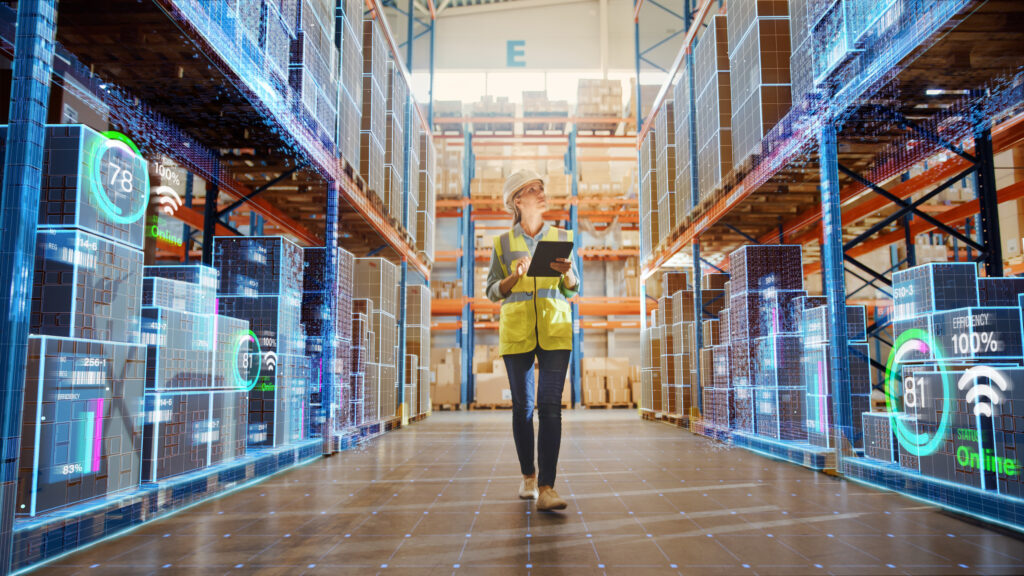With the advent of real-time location systems (RTLS) in manufacturing, an unprecedented amount of data is being generated. But now, a new question arises: How do facility operators and operation managers effectively use this data?
Although RTLS produces vast amounts of data that can be used to monitor daily operations across facilities, understanding the data and responding to it is not necessarily straightforward. Every site or facility has uniquely designed processes that require expert knowledge to create a digital representation of the process and visualize the data. In other words, to leverage data effectively, it needs to be organized and mapped to derive trends and gain novel insights.
I’ve previously discussed how data can be visualized on the manufacturing floor, but now I want to focus on visualizing data in the backend or on the management side. Instead of workers being directed to the next step in a process or given specific instructions, this approach involves deeper data analytics. The idea is to first highlight quantifiable bottlenecks and then point to measurable operational improvement.
Why Visualize Data?
RTLS deploys advanced technologies to track the precise location of assets, inventory and equipment within a defined area, be it indoors, outdoors or a hybrid environment. By utilizing various types of sensors and communication technologies, RTLS provides continuous, real-time visibility into the movement and status of these items. This technology tells you what you have, where you have it and how it got there. However, there are different ways to effectively display and communicate this location-enabled information.
There are primarily two distinct approaches to data visualization. The first one relates to displaying location-enabled data directly on the factory floor via strategically mounted displays that depict the real-time status of the operational flow. For example, these displays can be used to share real-time information on the resource allocation and machine yield, so that the shift manager can decide on possible corrections to meet daily targets.
On the other hand, the data could also be displayed in a central monitoring system to benefit the team leaders, factory managers and all other relevant personnel who monitor the operational flow on a larger scale. Essentially, it’s about showing location data on the floor to improve a specific site’s efficiency versus monitoring across many, possibly different, sites to dive deeper into trends and overall key performance indicators (KPIs).
How Can You Use This Data?
Because RTLS processes require substantial upfront investments, industrial operators will want to use the systems to their maximum potential to generate revenue. However, effective data utilization is not merely about collecting information but about transforming it into actionable intelligence that can drive process improvements and revenue growth for each site on many production threads, 24/7.
Focusing on the data analytics side, let’s explore how end customers—facility managers, shift leaders, users of services in a logistics facility, the chief operating officer (COO) and others—can utilize this data to optimize operations. Again, understanding the movement and utilization of assets within a facility is crucial for optimizing logistics. By analyzing RTLS data, managers can track how assets are being used, identify underutilized resources and make adjustments to improve efficiency.

For COOs and other top-level executives, the ability to visualize data in real time from a central dashboard provides valuable insights into the overall health of logistics operations. They can track key performance indicators (KPIs), monitor operational efficiency and make strategic decisions to drive the business forward. For instance, by analyzing data from RTLS, facility managers can identify inefficiencies in the process flow of assets. They can monitor lag times, highlight unneeded process steps and determine where processes can be improved.
Additionally, if RTLS data highlights recurring delays at a particular stage in the production line, managers can investigate the underlying causes—whether mechanical issues, staffing shortages or process inefficiencies—and implement targeted solutions to address these problems. RTLS may also highlight how the flaw is in the process design itself, not necessarily in the implementation.
Challenges To Implementation
The sheer volume of data generated by RTLS can be overwhelming. Without proper data management strategies, organizations may struggle to make sense of the data, leading to analysis paralysis and missed opportunities.
Consequently, implementing a robust data management framework is essential. This includes defining clear data governance policies, employing data filtering and aggregation techniques to focus on the most relevant data and using advanced data visualization tools to present actionable insights. Training staff on how to interpret and use the data effectively is also crucial to avoid being overwhelmed by information.
Even with advanced tools, interpreting the data generated by RTLS can be complex, particularly for organizations that lack data science expertise with specific processes and industrial operational knowledge. Misinterpretation can lead to poor decision making. This is why organizations may consider hiring or consulting with data scientists who can provide expert insights and ensure that the data is being interpreted correctly.
Many wrongly assume AI can be the answer to these challenges, but it’s important to recognize that AI is not a magic box of answers. The quality of AI outputs is directly related to the quality of the data and the models built upon that data. For logistics operators, this means that the first step is to understand how to capture and interpret data effectively. Once a solid data foundation is in place, AI can then be deployed to answer complex questions about process optimization.
Final Thoughts
Capitalizing on the new data streams generated by RTLS in logistics is not just about collecting information—it’s about making that information work for you. The potential to optimize operations, enhance decision making and drive revenue growth is immense, but it requires a strategic approach.
Successful implementation of RTLS and data analytics hinges on overcoming challenges such as data overload, integration complexities and the need for robust data management frameworks. By investing in the right tools, training and expertise, logistics operators can transform raw data into valuable insights that propel their business forward.
This article was originally published on Forbes.com.

